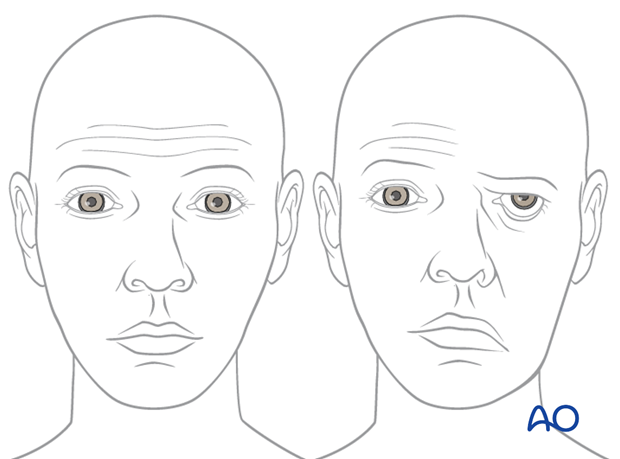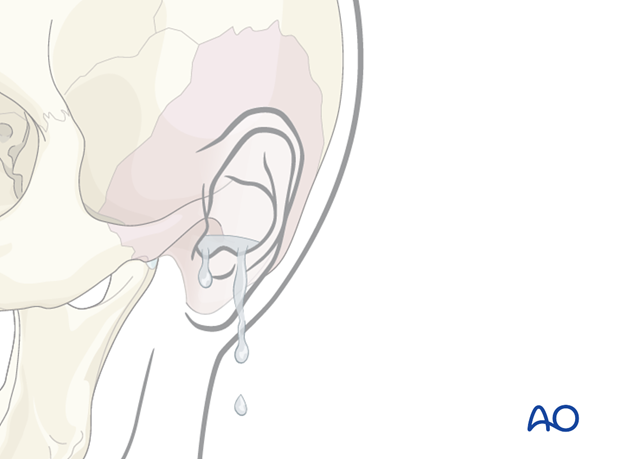Observation
1. Observation
The patient must be observed for changes in cranial nerve function. The cranial nerves that traverse the areas of fracture may show signs of improving function or increasing dysfunction in the aftermath of the injury. The main concern is facial nerve (CN VII) function. A patient may present with normal or near normal function and still develop paresis or paralysis. This indicates that the nerve is intact and reasonable recovery is likely though not assured. High dose systemic steroids may help. If the nerve is paralyzed immediately or almost immediately after the injury, careful observation for signs of recovery is important. If surgery is being considered, serial ENOG should be performed. If the patient is obtunded initially so that facial nerve function can not be evaluated, and when the patient awakens with complete paralysis, then the patient should be treated as though an immediate paralysis was present.

Most authors will observe a CSF leak for 7-10 days before considering surgical repair, though this is of course controversial.
While waiting, lumbar drainage should be considered to increase the likelihood of cessation of the leak.

2. Aftercare following management of temporal bone (lateral skull base) fractures
Some surgeons will use a lumbar drain to keep the CSF pressure low. If this is used great care must be exercised to ensure that excessive drainage of CSF does not occur inadvertently. Normally, not more than 240 ml/day should be drained. Stool softeners should be given to minimize straining. The head of the bed should be elevated.














